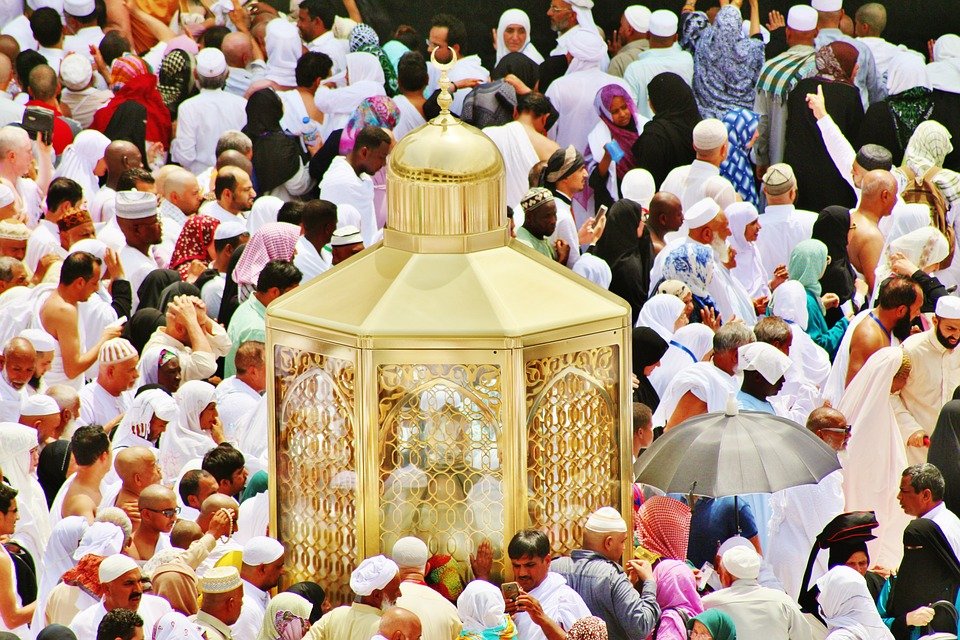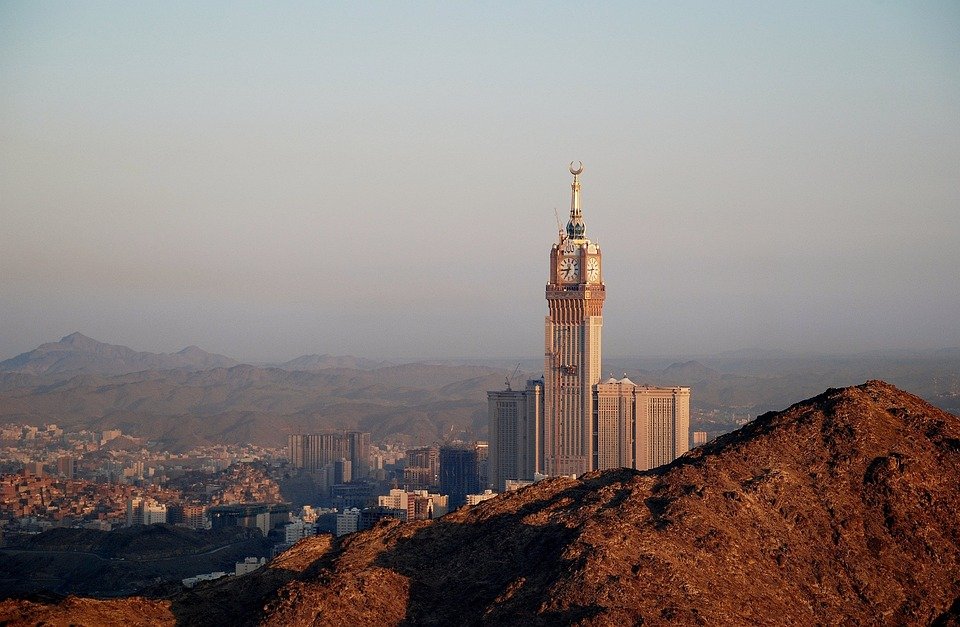You are here to read: What Do Muslims Do at Hajj: A Complete Guide to Rituals – A Thoughtfully Written Guide Offering Spiritual Wisdom and Travel Advice for Every Pilgrim who is going on holy journey of Hajj or Umrah.
In this article, we explore “what do Muslims do at Hajj,” a deeply significant pilgrimage that millions undertake each year in Mecca, Saudi Arabia. This sacred event comprises a series of rituals that embody faith, devotion, and unity among Muslims. From standing in prayer at the Arafat plain to walking around the Kaaba seven times, the experiences at Hajj are both spiritual and communal. I promise you will find a comprehensive guide here, detailing not just the rituals but also the profound meanings behind them.
Understanding “what do Muslims do at Hajj” goes beyond just the actions taken during the pilgrimage; it embodies the essence of faith and community in Islam. Each ritual holds historical and spiritual significance that connects Muslims across the globe. With over nine years of expertise in the field of Umrah and travel to Makkah and Madinah since 2016, we aim to provide insightful information on “What Do Muslims Do at Hajj: A Complete Guide to Rituals.” In my opinion, our knowledge helps us clarify the importance of Hajj and enriches both the pilgrimage experience and the understanding of these sacred practices.
What Do Muslims Do at Hajj: A Complete Guide to Rituals
The Significance of Hajj
Hajj stands as one of the five pillars of Islam, which means that it holds special importance for Muslims around the world. Each year, millions of Muslims travel to the holy city of Makkah in Saudi Arabia to perform this sacred pilgrimage. The journey is not just about visiting a place; it’s about spiritual renewal and a chance to fulfill an essential obligation. For many, it represents a life goal, a dream they hold often for years before they can make it to Saudi Arabia.
At its core, Hajj symbolizes unity among Muslims. People from all walks of life come together wearing simple white garments. These clothes signify purity and equality, reminding participants that before God, everyone is the same, regardless of race, nationality, or wealth. Through performing Hajj, Muslims strengthen their faith and express devotion, contributing to a deeper sense of belonging within the global Muslim community.
The Journey Begins: Ihram
Before arriving in Makkah, pilgrims enter a state called Ihram. This is more than just a dress code. It’s a mindset of purity and humility that every pilgrim must adopt. Men wear two simple white garments, while women choose any modest attire, typically covering their arms and legs. This transition into Ihram marks the start of their spiritual journey, reminding everyone of their intent to worship.
The rituals associated with Ihram begin with pilgrims making an intention, known as niyyah, to perform Hajj. This declaration signifies their commitment to follow the rituals with sincerity. Once in Ihram, certain activities become forbidden, like cutting hair or nails of any kind, and disputes or negative behavior must be avoided. Embracing this peaceful state fosters an atmosphere of reflection, preparing the heart and soul for the experiences ahead.
The Tawaf: Circling the Kaaba
Once in Makkah, the first major ritual is the Tawaf, where pilgrims circle the Kaaba seven times. The Kaaba, a cube-shaped structure at Islam’s holiest mosque, is a focal point for prayer and reflection. People believe that walking around the Kaaba symbolizes the harmony of nature and the universe, echoing unity within spirituality.
You're at the middle of this awesome post at AirlinkHajjandUmrah.com through: What Do Muslims Do at Hajj: A Complete Guide to Rituals. Keep reading, it gets better!
During Tawaf, pilgrims recite prayers and affirm their faith, each step taken with purpose. Observing the vast sea of humanity can be both awe-inspiring and humbling, as it offers a vivid illustration of collective devotion. The Kaaba’s black silk covering, known as the Kiswah, drapes elegantly and captures the hearts and minds of all who gaze upon it. Each lap around the Kaaba deepens a sense of connection with God, creating a powerful atmosphere of spirituality.
Sa’i: Walking Between Safa and Marwah
Another essential part of Hajj is the Sa’i, which involves walking seven times between the hills of Safa and Marwah. This ritual commemorates the desperate search for water by Hagar, the wife of Prophet Ibrahim. She ran tirelessly for her son, highlighting her determination and faith. In doing so, she became an icon of perseverance, and Muslims honor her efforts during Hajj.
As pilgrims walk, they reflect on Hagar’s story. Many feel a surge of emotion, connecting with her struggle and the hope that followed. The brisk walk back and forth provides an opportunity for personal reflection and prayer. The atmosphere is charged with spirituality as each individual walks in their path while remembering the legacy of faith, trust, and resilience.
Standing at Arafat: A Day of Prayer
The climax of Hajj is the Day of Arafat, which falls on the ninth day of Dhul-Hijjah, the last month of the Islamic calendar. Pilgrims gather at the plains of Arafat, where they spend the day in prayer and contemplation. This profound act symbolizes submission and devotion to God. Many feel an intense connection that enhances their spiritual awareness.
On this sacred day, pilgrims ask for forgiveness, express gratitude, and pray for their loved ones. The atmosphere is charged with unity as people from diverse backgrounds share a common purpose. They wear Ihram, regardless of their origins, which reinforces the message that everyone is equal in the sight of God. This moment acts as a reminder of life’s impermanence and the importance of humility.
The Ritual of Eid al-Adha and Qurbani
Hajj coincides with Eid al-Adha, a celebration marked by the sacrifice of animals. Muslims commemorate the willingness of Prophet Ibrahim to sacrifice his son as an act of obedience to God. This act symbolizes the spirit of giving, gratitude, and reliance on God’s provision. The ritual of Qurbani, which involves the sacrifice of sheep, goats, or cows, showcases a commitment to share blessings with those in need.
During this time, families gather to partake in meals and share the meat with neighbors and those less fortunate. The essence of Eid al-Adha revolves around charity and generosity, enriching the community spirit. Many take this time to strengthen ties with family and friends, sharing stories, laughter, and gratitude, adding joy to an already meaningful occasion.
The Tawaf al-Ifadah: Returning to the Kaaba
After the rituals of Arafat and Eid al-Adha, pilgrims return to the Kaaba for another round of Tawaf, known as Tawaf al-Ifadah. This act signifies a return to the spiritual heart of Makkah, reinforcing their devotion and commitment to faith. As they circle the Kaaba once more, pilgrims reflect on their experiences, carrying the lessons of humility and gratitude within their hearts.
Completing the Tawaf al-Ifadah is one of the highlights of Hajj. Each circle provides a moment for individual prayers and intentions. Many pilgrims report feeling transformed after this act, enriched by the experiences and connections made throughout their time in Makkah. The vibrant atmosphere creates opportunities for bonding among fellow pilgrims, illustrating that Hajj is not only a personal journey but also a communal experience.
Conclusion: The Impact of Hajj
Hajj serves as a powerful reminder of faith, community, and self-reflection. Through various rituals, Muslims deepen their spirituality and strengthen their connections with others. This sacred pilgrimage transforms hearts and minds, celebrating devotion while fostering a sense of belonging among people of all backgrounds.
For many, Hajj leaves an indelible mark on their lives. The experiences and lessons learned continue to resonate long after the pilgrimage ends. As each pilgrim returns home, they carry a piece of Makkah within them, spreading love, kindness, and faith to their communities. The legacy of Hajj is, ultimately, a beautiful tapestry woven from shared experiences and spiritual growth.
That wraps up What Do Muslims Do at Hajj: A Complete Guide to Rituals. Thanks for sticking with us till here! Share this: What Do Muslims Do at Hajj: A Complete Guide to Rituals with your friends.
Check our homepage at Air Link Hajj & Umrah for more awesome updates.
Some interesting posts are: 1: Umrah Mubarak, 2: When is Umrah closed 2026?, 3: When does Umrah start after Hajj 2026?
Mushu, an experienced Saudi Arabia traveler and writer, shares insightful tips and spiritual reflections to enhance Hajj and Umrah journeys for fellow pilgrims. He has been to Makkah and Madina from 2016 to 2023 many times and his posts will reflect this.






